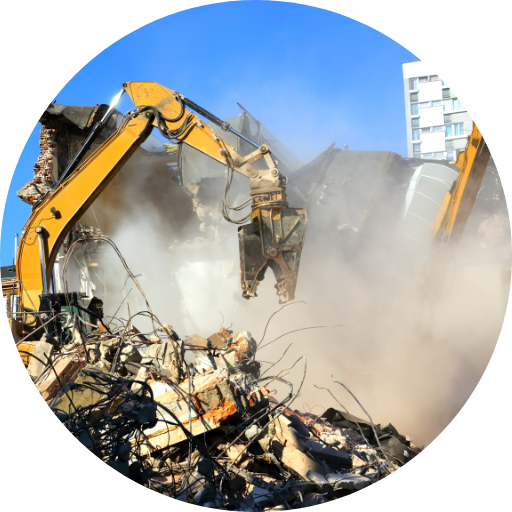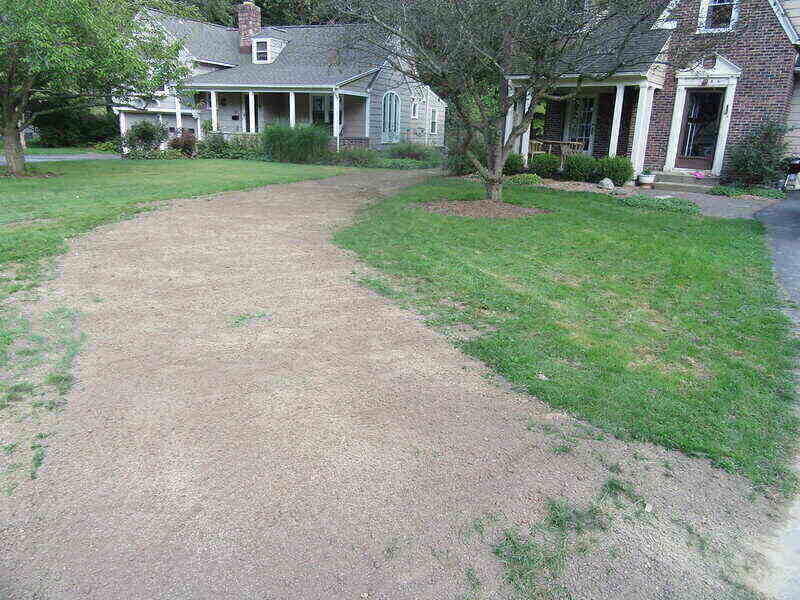The national average cost of concrete removal is $1,444, with a typical range between $679 and $2,848 or between $2 and $6 per square foot. Low-end projects, in which pros remove a small, thin concrete slab, average around $260. High-end projects, involving pros removing a large, reinforced, thick slab, will cost an average of $7,703.
Concrete can be a great foundation as a patio, walkway, or even a driveway but sometimes a cracked, crumbling concrete slab needs to be replaced. When that happens, it’s time to call in a professional to cut and haul away your concrete.
Keep in mind many factors affect concrete removal costs, including the slab’s size, thickness, location, and any reinforcements. Want to replace your old slab with a new concrete driveway or stamped patio? We’ve got those prices covered, too.
Table of Contents
How Much Does Concrete Removal Cost
- National Average Cost: $1,444
- Typical Range: $679 to $2,848 or $2 to $6 per square foot
- Low End: $260
- High End: $7,703
On average, most homeowners pay $1,444 for professional concrete slab removal. The typical price range for concrete removal is between $679 and $2,848 or between $2 and $6 per square foot.
Read: Wooden Deck vs. Concrete Patio
Total costs might fall below or above the average range depending on the slab’s size, location, thickness, and reinforcements. Small-scale concrete removal projects cost most homeowners around $260, while large-scale concrete removal averages around $7,703. Again, there are many reasons why your total cost for concrete removal might vary from these averages.
Cost Estimator by Size
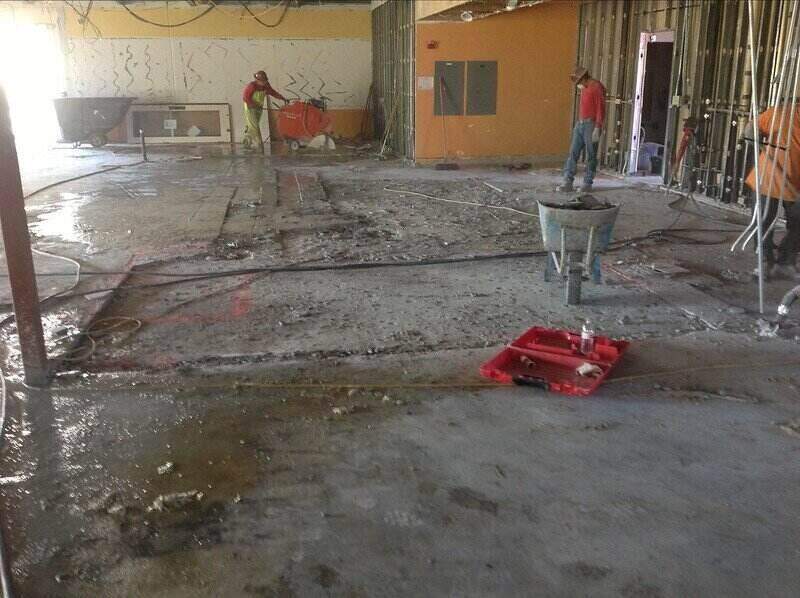
Your concrete slab’s size will have the most significant impact on total spending. Most concrete professionals charge by the square foot, so the larger your concrete slab is, the more you’ll pay.
Read: What is the cost for stamped concrete?
On average, square-foot concrete removal rates range from $2 to $6 per square foot. This price includes the cost of labor and disposal fees.
| CONCRETE SLAB SIZE | AVERAGE PRICE RANGE |
| 50 sq. ft. | $100 to $300 |
| 100 sq. ft. | $200 to $600 |
| 200 sq. ft. | $400 to $1,200 |
| 300 sq. ft. | $600 to $1,800 |
| 400 sq. ft. | $800 to $2,400 |
| 500 sq. ft. | $1,000 to $3,000 |
| 600 sq. ft. | $1,200 to $3,600 |
| 700 sq. ft. | $1,400 to $4,200 |
| 800 sq. ft. | $1,600 to $4,800 |
| 900 sq. ft. | $1,800 to $5,400 |
| 1000 sq. ft. | $2,000 to $6,000 |
Other Factors That Affect Cost
Removing your concrete slab will likely cost between $2 and $6 per square foot, but what factors determine where the final price falls within that range? When can you expect to pay $2 to $4 per square foot or $4 to $6 per square foot? It all comes down to how thick the slab is, where it’s located, and whether the slab contains reinforcements.
Find out: How much does a concrete slab cost?
- Reinforcements: If your concrete slab has built-in wire mesh or rebar, expect a higher removal bill.
- Thickness: The thicker the concrete slab, the more you’ll need to pay per square foot.
- Location: Is your concrete in a hard-to-reach area? Poor access may increase costs.
- Type of surface: Removing a concrete patio, driveway, or walkway? Read on for average project costs.
Reinforcements
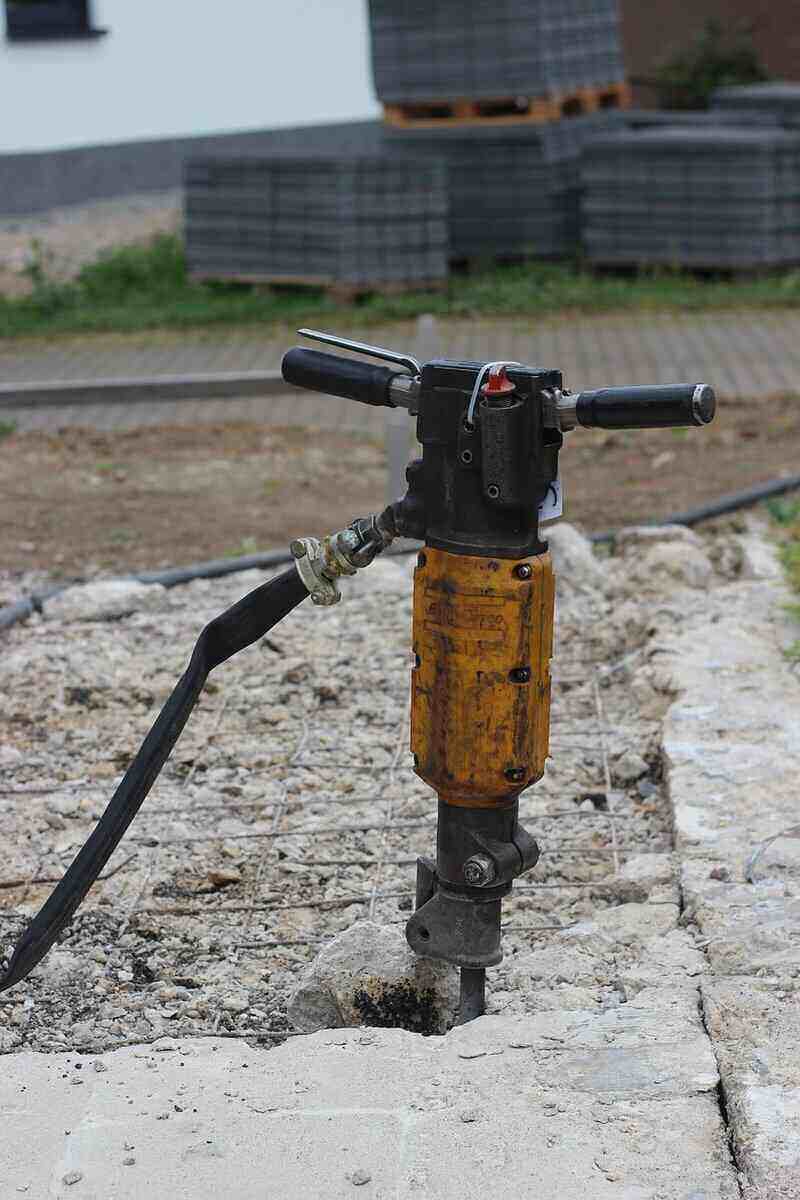
If your concrete slab contains reinforcements, expect to pay between $4 and $6 per square foot for removal. Concrete slabs without reinforcements will typically cost $2 to $4 per square foot to remove.
What is reinforced concrete? There are many ways to reinforce concrete. But in this case, reinforced concrete contains wire mesh and rebar. And it’s the wire mesh and rebar that will drive up removal costs.
Why? Wire mesh and rebar make the removal job more difficult for the pros, leading to higher labor costs.
Unreinforced concrete is much easier to remove since it doesn’t contain anything inside that makes it difficult to get out of your yard or off your land.
| CONCRETE SLAB SIZE | UNREINFORCED CONCRETE | REINFORCED CONCRETE |
| 50 sq. ft. | $100 to $200 | $200 to $300 |
| 100 sq. ft. | $200 to $400 | $400 to $600 |
| 200 sq. ft. | $400 to $800 | $800 to $1,200 |
| 300 sq. ft. | $600 to $1,200 | $1,200 to $1,800 |
| 400 sq. ft. | $800 to $1,600 | $1,600 to $2,400 |
| 500 sq. ft. | $1,000 to $2,000 | $2,000 to $3,000 |
| 600 sq. ft. | $1,200 to $2,400 | $2,400 to $3,600 |
| 700 sq. ft. | $1,400 to $2,800 | $2,800 to $4,200 |
| 800 sq. ft. | $1,600 to $3,200 | $3,200 to $4,800 |
| 900 sq. ft. | $1,800 to $3,600 | $3,600 to $5,400 |
| 1000 sq. ft. | $2,000 to $4,000 | $4,000 to $6,000 |
Thickness
The thicker your concrete slab, the more difficult it is to remove. Thicker slabs drive up labor costs. They also might increase disposal fees, depending on how the local concrete disposal system works.
Most concrete slabs are between 4 and 6 inches thick, but some are as thick as 8 inches.
The bottom line: A thick concrete slab is more expensive to remove than a thin concrete slab.
Location
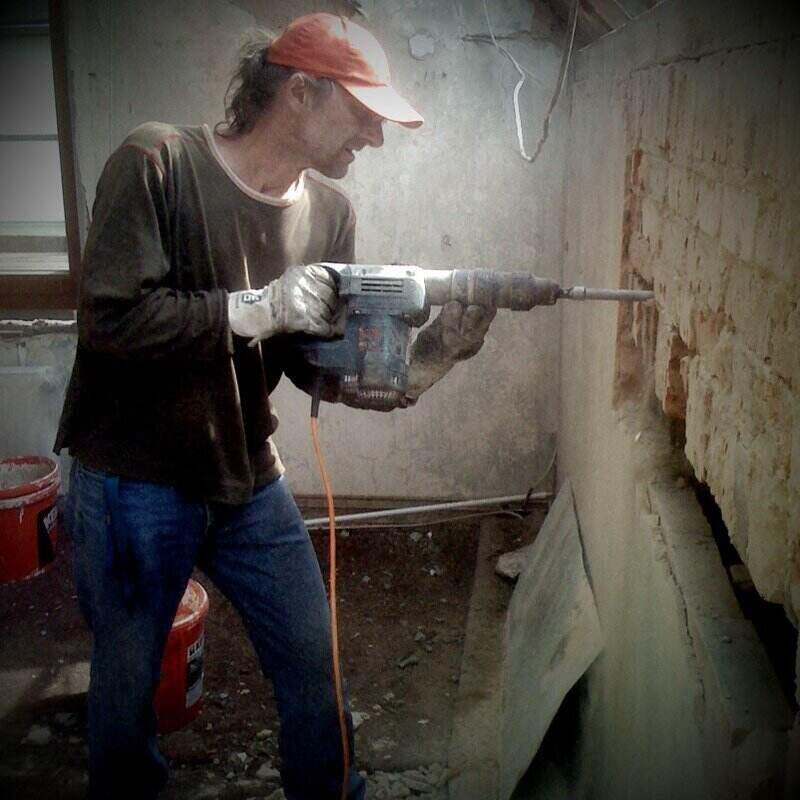
When a concrete slab is located in hard-to-reach areas, it makes removal more challenging. If pros cannot fit or use their tools in the location, they may have to remove the concrete by hand, making their job more difficult and expensive.
Pro Tip: Before any concrete slab removal begins, it’s wise to contact your local utility company. They’ll send a pro to your home to flag off any underground utility lines. This service is typically free and helps ensure no utility damage occurs during concrete removal.
Type of surface
Removing an old concrete patio or driveway? Because these surfaces vary in size and thickness, so do their prices.
On average, here’s what you can expect to pay to remove the different concrete surfaces you might find in the yard:
| SURFACE | AVERAGE COST RANGE |
| Concrete Stairs | $250 to $400 |
| Concrete Sidewalk | $868 to $1,855 |
| Concrete Patio | $1,000 to $2,000 |
| Concrete Driveway | $1,020 to $2,005 |
Extra Services
Once the pros have removed the concrete, you’ll have an empty spot in the yard that needs some sprucing up. The job site is likely going to need a new patch of grass. Or maybe you want to install a brand new stamped patio for outdoor cookouts.
- Seeding: Sod, hydroseeding, broadcast seeding –– there are plenty of ways to bring some green to your yard.
- Concrete replacement: Concrete can look beautiful when installed right. Consider replacing your old, cracked concrete with a new concrete patio.
- Landscaping: Your yard might look better without that old concrete slab, but why not shake things up with a dash of color (flowers) and texture (ground covers)?
Seeding
That aging concrete might finally be gone, but now that area of your yard looks bare without any grass. Let’s get that corner of the yard looking good again with a carpet of fresh turf. Three popular lawn growing methods are traditional seeding, hydroseeding, and sod installation.
Traditional seeding
Traditional seeding involves spreading natural grass seed either by hand or using a spreader tool. Homeowners will have to wait about seven to 30 days before the seeds begin to germinate and about two months before they can mow the lawn.
Although homeowners need to be patient before seeing results, broadcast seeding is the most DIY-friendly grass growing method and the most affordable. On average, grass seed bags cost $1.50 to $6.40 per pound. Homeowners who hire a professional to do the job for them pay an average of $668.
Hydroseeding
Hydroseeding is a smart option for homeowners who:
- Have to seed a large area: Hydroseeding involves spraying a slurry mixture of fertilizer, grass seed, water, binding agents, and mulch with a hose. The spraying process allows pros to cover a large amount of land in a short time.
- Have erosion problems: The binding agents and mulch in the hydroseed help the grass seed bind to the soil, which is why rain and wind have a more difficult time eroding hydroseed away. This grass growing method proves especially useful on slopes and hills.
- Are on a budget: Hydroseeding is more affordable than sod but more expensive than traditional seeding.
- Want fast results: Hydroseed grows faster than traditional seeding but doesn’t provide the same instant results as sod.
Cost of hydroseeding: Homeowners can expect to pay between $0.08 and $0.20 per square foot for hydroseeding.
Sod installation
Sod is like rolling a carpet of grass out on the land. You need to wait a few weeks before the sod takes root, but otherwise, you have a green lawn (relatively) quickly.
What is sod? Sod is a sliced layer of soil (about 1 to 2 inches thick) with a grass layer growing on top. On average, homeowners pay between $0.87 to $1.76 per square foot for sod installation, labor and materials included.
Concrete replacement
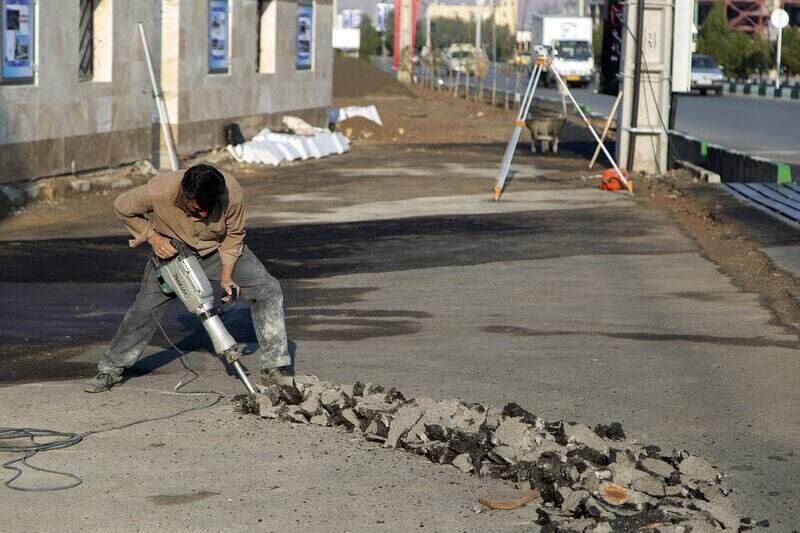
That old concrete slab had to go, but that doesn’t mean you should avoid concrete altogether. Concrete can look beautiful in the yard if it’s designed and installed right.
For instance, stamped concrete can mirror attractive paver materials, such as natural stone, brick, and wood. Concrete makes for a solid foundation for outdoor entertainment, creating the perfect space for a patio, outdoor kitchen, or cozy fire pit.
Pouring a new slab of concrete in your yard opens many possibilities for more outdoor projects. Hot tubs, pergolas, outdoor dining area –– you name it.
But how much will these different concrete surfaces (along with the landscaping/hardscaping bells and whistles) pull from your wallet? We’ve got the cost estimates below:
| CONCRETE SURFACE | AVERAGE COST *per square foot |
AVERAGE COST RANGE |
| Unreinforced Concrete Slab (100 sq. ft.) | $4.34 to $7.73 | $434 to $773 |
| Reinforced Concrete Slab(100 sq. ft.) | $9.29 to $10.04 | $929 to $1,004 |
| Stamped Concrete(100 sq. ft.) | $9 to $16.25 | $900 to $1,625 |
| Concrete Patio (200 sq. ft.) | $4.40 to $16 | $880 to $3,200 |
| Concrete Driveway(576 sq. ft.) | $6 to $14 | $3,456 to $8,064 |
| BELLS AND WHISTLES | AVERAGE COST |
| Outdoor Kitchen | $5,057 to $17,276 |
| Fire Pit | $367 to $2,233 |
| Pergola | $2,216 to $8,959 |
| Above-ground Hot Tub | $3,500 to $9,250 |
Landscaping
Whether you’re planning to replace the concrete slab or keep the area concrete-free, landscaping can be a wise investment for your home.
Homeowners typically spend between $4,000 and $20,317 for landscaping, but prices will vary significantly depending on the project at hand.
| LANDSCAPING PROJECT | AVERAGE COST |
| Pathway Installation | $8 to $22 per square foot |
| Tree and Bush Planting | $25 to $3,000 |
| Mulch Installation | $37 to $113 per cubic yard |
| Flower Bed Planting | $650 to $3,000 |
| Retaining Wall Installation | $4,025 to $8,711 |
| Gazebo Installation | $5,364 to $9,027 |
Cost of Concrete Removal Across the U.S.
All prices listed in this concrete removal cost guide are national averages. Estimating your total spending based on the national average can be a significant help, but keep in mind that prices for any service can vary depending on where you live.
For instance, concrete removal prices on a local scale may vary depending on the demand for concrete removal in your area. If demand for concrete removal services in your region is high, but labor supply is low, you may find that local rates are slightly higher than the national average.
Cost of DIY Concrete Removal
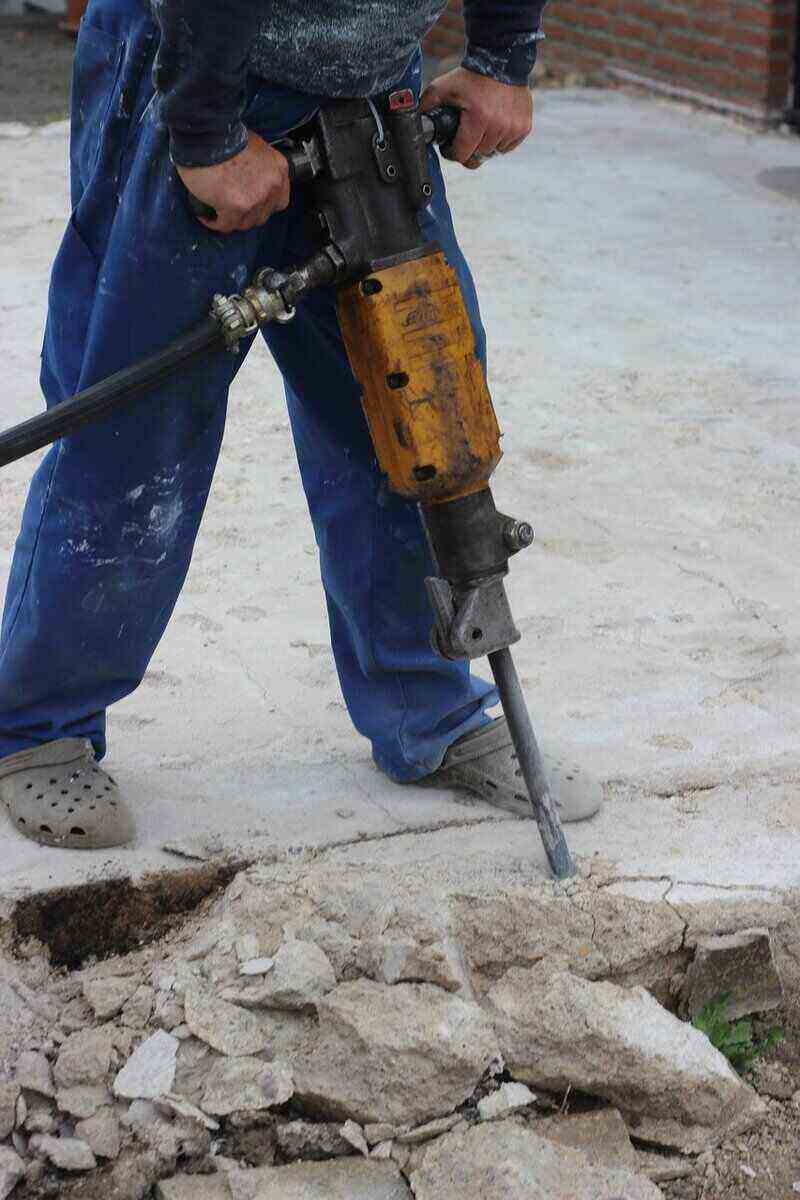
Whether you’re pouring a new concrete slab or removing an old one, working with concrete is a challenging DIY project. If you’re not familiar with removing concrete, it’s a good idea to hire a professional. Hiring a concrete contractor ensures you don’t perform any costly mistakes on your property, and it also ensures your safety.
Concrete removal involves using multiple tools to break up the concrete into small bits and pieces. Before you get digging, don’t forget to call 811 to have a utility company come to your home and mark off any underground utilities. This service is typically free. Disposal costs will also vary depending on your local concrete disposal services.
Essential tools and safety gear prices are in the list below. The average tool costs are according to the top five featured products online at Amazon, Lowe’s, and HomeDepot. Rental prices are estimated using rates at Lowe’s and HomeDepot:
| TOOLS | AVERAGE COST |
| Safety Glasses | $13 |
| Crowbar | $13 |
| Work Gloves | $14 |
| Shovel | $24 |
| Ear Protection | $25 |
| Sledgehammer (8 pounds and up) | $43 |
| Bolt Cutters | $66 |
| Circular Saw / Concrete Saw | $52 (24-hour rental) |
| Wheelbarrow | $90 |
| Jackhammer / Breaker | $91 (24-hour rental) |
| TOTAL: | $431 |
Lowe’s offers a helpful instructional video on how to approach concrete removal. Keep in mind that not every concrete slab is the same –– you might run into problems not covered in this video guide.
FAQ About Concrete Removal
Permit requirements vary depending on where you live. Do your own research on permit requirements before removing your concrete. Many cities and counties require a permit for the demolition of any structure.
The time it takes to remove concrete depends on the scope of the project. If you’re removing a small slab, it could take a few hours to demolish. Removing long driveway or foundation slab could last a few days — the more extensive and thicker the concrete slab, the more time-consuming the removal job.
Conclusion
Concrete can be a beautiful feature in the landscape, but when a slab’s cracks and crumbles are beyond repair, your landscape might look better without it. It’s possible to take on this home improvement project yourself, but buying all the DIY tools might prove more expensive than hiring a professional, especially if the slab to be removed is small.
Want to replace the slab with swaying flower beds or a charming gazebo? Call a landscaping professional near you to turn that bare patch into a spectacle (in a good way).
Remember, concrete demolition costs most homeowners $1,444 and has an average price range between $679 and $2,848 or between $2 and $6 per square foot. Small-scale concrete removal projects average $260, while large-scale concrete demolition averages around $7,703.
